

Running Barefoot May Help Your Feet
 A study has found that running barefoot reduces stresses on your feet. Utilizing high-speed video and special scales, researchers found that runners in shoes and barefoot runners land on different parts of the foot. Barefoot runners land towards the front of the foot while runners with shoes land on their heels. Landing on the front of the foot produces very little stress compared to landing on the heel. One evolutionary biologist was unsurprised given that humans have evolved to not need shoes. However, it will likely take some time for most people to toughen up the bottoms of their feet to be comfortable running barefoot.
A study has found that running barefoot reduces stresses on your feet. Utilizing high-speed video and special scales, researchers found that runners in shoes and barefoot runners land on different parts of the foot. Barefoot runners land towards the front of the foot while runners with shoes land on their heels. Landing on the front of the foot produces very little stress compared to landing on the heel. One evolutionary biologist was unsurprised given that humans have evolved to not need shoes. However, it will likely take some time for most people to toughen up the bottoms of their feet to be comfortable running barefoot.
Barefoot running has its own share of benefits and disadvantages. If you have any concerns about your feet or ankles, contact Dr. Randy Garr from Bigfoot Podiatry. Our doctor will treat your foot and ankle needs.
Barefoot Running
The Impact of Barefoot Running
- Running without shoes changes the motion of your running, as most running is done by landing on the heel of the feet.
- Running barefoot requires a different way of running; the landing is done on the front part of the feet.
The Advantages of Barefoot Running
- When running and landing on the front feet, the impact on the feet and ankle is reduced; this can reduce stress injuries.
- It strengthens muscles in the feet, ankles and lower legs.
- Balance of the body is improved, and there is a greater sensory input from the feet to the rest of the body.
The Drawbacks of Barefoot Running
- No protection while running, makes it likely that runners will land on sharp objects and scrapes, bruises and cuts on the feet will result.
- Blisters may form.
- Possibility of plantar fascia problems.
- Risk of getting Achilles tendonitis.
So, what can runners do to make barefoot running safe? It’s best to make a slow transition from running shoes to barefoot running. Once the feet begin to adjust, try walking, then jogging and gradually increasing the distance. Minimalist running shoes may also be an option.
If you have any questions please feel free to contact one of our office located in Provo, UT . We offer the newest diagnostic and treatment technologies for all your foot and ankle needs.
The Importance of Foot Inspections for Diabetics
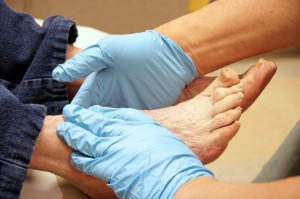 It is important for people with diabetes to be extra careful with their feet, and to inspect them on a routine basis. Diabetics should look at their feet every day to see if there are any blisters, cuts, or wounds on them. If you are a diabetic and cannot physically do this on your own, you should ask a friend or family member to help. It is also crucial that you take good care of your feet by washing them well with lukewarm water and a mild soap. People with diabetes should also try to exercise often. One of the biggest tips for caring for diabetic feet is to care for wounds as soon as possible and to not let them go untreated. For diabetics, untreated wounds can often lead to hospitalization or even worse, amputation.
It is important for people with diabetes to be extra careful with their feet, and to inspect them on a routine basis. Diabetics should look at their feet every day to see if there are any blisters, cuts, or wounds on them. If you are a diabetic and cannot physically do this on your own, you should ask a friend or family member to help. It is also crucial that you take good care of your feet by washing them well with lukewarm water and a mild soap. People with diabetes should also try to exercise often. One of the biggest tips for caring for diabetic feet is to care for wounds as soon as possible and to not let them go untreated. For diabetics, untreated wounds can often lead to hospitalization or even worse, amputation.
Diabetic foot care is important in preventing foot ailments such as ulcers. If you are suffering from diabetes or have any other concerns about your feet, contact Dr. Randy Garr from Bigfoot Podiatry. Our doctor can provide the care you need to keep you pain-free and on your feet.
Diabetic Foot Care
Diabetes affects millions of people every year. The condition can damage blood vessels in many parts of the body, especially the feet. Because of this, taking care of your feet is essential if you have diabetes, and having a podiatrist help monitor your foot health is highly recommended.
The Importance of Caring for Your Feet
- Routinely inspect your feet for bruises or sores.
- Wear socks that fit your feet comfortably.
- Wear comfortable shoes that provide adequate support.
Patients with diabetes should have their doctor monitor their blood levels, as blood sugar levels play such a huge role in diabetic care. Monitoring these levels on a regular basis is highly advised.
It is always best to inform your healthcare professional of any concerns you may have regarding your feet, especially for diabetic patients. Early treatment and routine foot examinations are keys to maintaining proper health, especially because severe complications can arise if proper treatment is not applied.
If you have any questions please feel free to contact our office located in Provo, UT . We offer the newest diagnostic and treatment technologies for all your foot and ankle needs.
How to Achieve Healthy Feet
 Now that summer is here, it is especially important that you take care of your feet so you can enjoy the season. The American Podiatric Medical Association recently gave out some tips that are geared towards helping you maintain healthy feet. One of the most important tips you can follow is to avoid walking barefoot. This is especially crucial when you are in locker rooms, pools, or at the beach. You should also protect your feet by using sunscreen and by regularly applying it after you go swimming. Another tip is to drink a lot of water, so that you can avoid swelling in the feet and ankles. Lastly, be sure to wear water shoes if you plan on being around the water, and bring dry shoes that you can change into after you are done swimming.
Now that summer is here, it is especially important that you take care of your feet so you can enjoy the season. The American Podiatric Medical Association recently gave out some tips that are geared towards helping you maintain healthy feet. One of the most important tips you can follow is to avoid walking barefoot. This is especially crucial when you are in locker rooms, pools, or at the beach. You should also protect your feet by using sunscreen and by regularly applying it after you go swimming. Another tip is to drink a lot of water, so that you can avoid swelling in the feet and ankles. Lastly, be sure to wear water shoes if you plan on being around the water, and bring dry shoes that you can change into after you are done swimming.
Everyday foot care is very important to prevent infection and other foot ailments. If you need your feet checked, contact Dr. Randy Garr from Bigfoot Podiatry. Our doctor can provide the care you need to keep you pain-free and on your feet.
Everyday Foot Care
Often, people take care of their bodies, face and hair more so than they do for their feet. But the feet are a very important aspect of our bodies, and one that we should pay more attention to. Without our feet, we would not be able to perform most daily tasks.
It is best to check your feet regularly to make sure there are no new bruises or cuts that you may not have noticed before. For dry feet, moisturizer can easily be a remedy and can be applied as often as necessary to the affected areas. Wearing shoes that fit well can also help you maintain good foot health, as well as making it easier to walk and do daily activities without the stress or pain of ill-fitting shoes, high heels, or even flip flops. Wearing clean socks with closed shoes is important to ensure that sweat and bacteria do not accumulate within the shoe. Clean socks help to prevent Athlete’s foot, fungi problems, bad odors, and can absorb sweat.
If you have any questions please feel free to contact our office located in Provo, UT . We offer the newest diagnostic and treatment technologies for all your foot and ankle needs.
How to Know If You Have Toenail Fungus
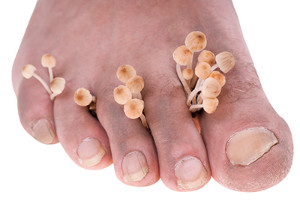 Toenail fungus may appear as a yellow or white patch on your nail. It is important that you try to treat your fungus in its early stages before it begins to make your nail crumble. In worse cases, the fungus may start to spread to your skin as well as other nails that surround it. People who are older or have a weak immune system are much more prone to toenail fungus than anyone else. Those with diabetes or those who have a genetic history of the infection are also more likely to get it. Treatment for toenail fungus often depends on the severity of your case. Mild cases of the fungus may be treated with topical medications, while more severe cases may need oral therapy or laser therapy.
Toenail fungus may appear as a yellow or white patch on your nail. It is important that you try to treat your fungus in its early stages before it begins to make your nail crumble. In worse cases, the fungus may start to spread to your skin as well as other nails that surround it. People who are older or have a weak immune system are much more prone to toenail fungus than anyone else. Those with diabetes or those who have a genetic history of the infection are also more likely to get it. Treatment for toenail fungus often depends on the severity of your case. Mild cases of the fungus may be treated with topical medications, while more severe cases may need oral therapy or laser therapy.
For more information about treatment, contact Dr. Randy Garr of Bigfoot Podiatry. Our doctor can provide the care you need to keep you pain-free and on your feet.
Toenail Fungus Treatment
Toenail fungus is a condition that affects many people and can be especially hard to get rid of. Fortunately, there are several methods to go about treating and avoiding it.
Antifungals & Deterrence
Oral antifungal medicine has been shown to be effective in many cases. It is important to consult with a podiatrist to determine the proper regiment for you, or potentially explore other options.
Applying foot powder on the feet and shoes helps keep the feet free of moisture and sweat.
Sandals or open toed shoes – Wearing these will allow air movement and help keep feet dry. They also expose your feet to light, which fungus cannot tolerate. Socks with moisture wicking material also help as well.
If you have any questions please feel free to contact our office located in Provo, UT . We offer the newest diagnostic tools and technology to treat your foot and ankle needs.
Why Ankle Pain Shouldn’t Be Ignored
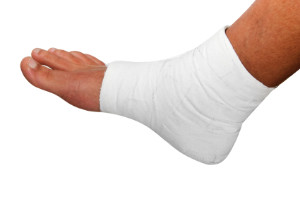 Baby boomers should be cautious about old ankle sprains coming back to plague them. These older Americans are finding that their old sprains are not only returning, but also causing more damage than they did before. This is why it is crucial that you do not ignore any ankle pain you may be experiencing, and to beware of the signs of an ankle sprain. Swelling is one of the most obvious trademarks of an ankle sprain that should not be ignored. If you have suffered a sprain in the past, you may not notice a decrease in your ankle’s strength while casually walking around. However, you may notice that your ankle is weaker while engaging in a more physical activity. If you are putting stress on a previously sprained ankle, you risk the potential of damaging your ligaments even further, which may result in pain.
Baby boomers should be cautious about old ankle sprains coming back to plague them. These older Americans are finding that their old sprains are not only returning, but also causing more damage than they did before. This is why it is crucial that you do not ignore any ankle pain you may be experiencing, and to beware of the signs of an ankle sprain. Swelling is one of the most obvious trademarks of an ankle sprain that should not be ignored. If you have suffered a sprain in the past, you may not notice a decrease in your ankle’s strength while casually walking around. However, you may notice that your ankle is weaker while engaging in a more physical activity. If you are putting stress on a previously sprained ankle, you risk the potential of damaging your ligaments even further, which may result in pain.
Ankle sprains are common but need immediate attention. If you need your feet checked, contact Dr. Randy Garr from Bigfoot Podiatry. Our doctor can provide the care you need to keep you pain-free and on your feet.
How Does an Ankle Sprain Occur?
Ankle sprains take place when the ligaments in your ankle are torn or stretched beyond their limits. There are multiple ways that the ankle can become injured, including twisting or rolling over onto your ankle, putting undue stress on it, or causing trauma to the ankle itself.
What Are the Symptoms?
- Mild to moderate bruising
- Limited mobility
- Swelling
- Discoloration of the skin (depending on severity)
Preventing a Sprain
- Wearing appropriate shoes for the occasion
- Stretching before exercises and sports
- Knowing your limits
Treatment of a Sprain
Treatment of a sprain depends on the severity. Many times, people are told to rest and remain off their feet completely, while others are given an air cast. If the sprain is very severe, surgery may be required.
If you have suffered an ankle sprain previously, you may want to consider additional support such as a brace and regular exercises to strengthen the ankle.
If you have any questions please feel free to contact our office located in Provo, UT . We offer the newest diagnostic and treatment technologies for all your foot and ankle needs.
The Harmful Effects of Working on Your Feet
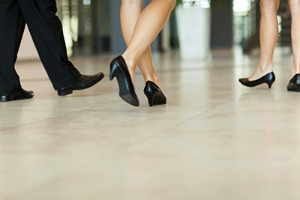 Many people are required to stand on their feet for long hours in order to do their jobs. As a result, people who work as sales associates, factory workers, and nurses often suffer from a condition called plantar fasciitis which can cause a lot of pain in the heels. People who have plantar fasciitis often complain that their feet hurt within the first few steps of the morning, with the pain slowly disappearing the more they walk around. However, if the condition goes untreated, it may start to worsen. It is important that people with plantar fasciitis seek the help of a podiatrist in order to address their situation and receive treatment.
Many people are required to stand on their feet for long hours in order to do their jobs. As a result, people who work as sales associates, factory workers, and nurses often suffer from a condition called plantar fasciitis which can cause a lot of pain in the heels. People who have plantar fasciitis often complain that their feet hurt within the first few steps of the morning, with the pain slowly disappearing the more they walk around. However, if the condition goes untreated, it may start to worsen. It is important that people with plantar fasciitis seek the help of a podiatrist in order to address their situation and receive treatment.
While working on the feet, it is important to take the proper care of them. For more information about working on your feet, contact Dr. Randy Garr from Bigfoot Podiatry. Our doctor will treat your foot and ankle needs.
Working on Your Feet
Standing on your feet for long periods of time can cause stress and pain in your feet. Your whole body may experience change in terms of posture, back pain, bunions, callouses and or plantar warts. There are ways to avoid these conditions with proper foot care, smart choices and correct posture.
Positive Changes
Negative heeled shoe – Choosing this shoe type places the heel slightly lower than the ball of the foot. These are great for overall foot health. Find shoes that fit you correctly.
Go barefoot – Our feet were not designed to be enclosed for all hours of the day. Try to periodically expose your feet to air.
Eliminate Pain
Foot Exercises – Performing simple exercises, incorporating yoga and doing stretches are beneficial. This will allow increased blood flow to the area and muscles of the foot.
Achilles tendon – Stretching the foot out flat on the floor will relax the calf muscles and tendon. These exercises can be performed almost anywhere. Make sure you add these exercises to your daily regimen.
With a little bit of this information and knowing more about foot health, you will notice changes. Foot stretches and proper footwear will help with pain and prevent further issues.
If you have any questions please feel free to contact our office located in Provo, UT . We offer the newest diagnostic and treatment technologies for all your foot and ankle needs.
The Connection Between Obesity, RA, and the Health of Your Feet
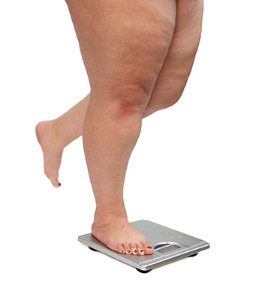 According to the World Health Organization (WHO), over 2.8 million people die each year due to complications resulting from obesity. Researchers at the University Hospital in Denmark conducted a study that showed obesity was linked to an increased risk of rheumatoid arthritis development in women. This is largely attributed to the fact that obesity disrupts bone health and development. Rheumatoid arthritis is a condition that affects the joints in the feet, hands, and knees. While there isn’t a cure for the inflammatory disorder, the best way to treat it is by use of medication and physical therapy.
According to the World Health Organization (WHO), over 2.8 million people die each year due to complications resulting from obesity. Researchers at the University Hospital in Denmark conducted a study that showed obesity was linked to an increased risk of rheumatoid arthritis development in women. This is largely attributed to the fact that obesity disrupts bone health and development. Rheumatoid arthritis is a condition that affects the joints in the feet, hands, and knees. While there isn’t a cure for the inflammatory disorder, the best way to treat it is by use of medication and physical therapy.
Obesity has become very problematic at this point in time and can have extremely negative effects on the feet. If you’re an obese individual and are concerned about your feet, contact Dr. Randy Garr from Bigfoot Podiatry. Our doctor can provide the care you need to keep you pain-free and on your feet.
Obesity and Your Feet
Since your feet are what support your entire weight when standing, any additional weight can result in pain and swelling. Being overweight is one of the main contributors to foot complications.
Problems & Complications
Extra Weight – Even putting on just a few extra pounds could create serious complications for your feet. As your weight increases, your balance and body will shift, creating new stresses on your feet. This uneven weight distribution can cause pain, even while doing the simplest tasks, such as walking.
Diabetes – People who are overweight are at serious risk of developing type-2 diabetes, which has a drastic impact on the health of your feet. As you get older, your diabetes might worsen, which could lead to loss of feeling in your feet, sores, and bruises. You could also become more prone to various infections.
Plantar fasciitis – Pressure and stress that is placed on muscles, joints, and tendons can trigger plantar fasciitis, which is an inflammation of tissue that forms along the bottom of the foot.
If you have any questions please feel free to contact our office located in Provo, UT . We offer the newest diagnostic and treatment technologies for all your foot and ankle needs.
Why Heels are Bad for Your Feet
 Almost every woman is guilty of owning a pair of high heels. While there are a few pros that come along with wearing heels, the amount of cons outweighs them. One of the common issues with high heels is the pain they cause to those who wear them. The worst pain tends to occur at the ball of the foot, since this is the part that is experiencing the most pressure. Additionally, it is hard for women to find their balance while wearing heels. This can lead to some dangerous injuries while wearing them. Another problem that stems from heels is the fact that they force your toes into an unnatural position. This shifting movement has the potential to cause pain in your toes and calluses.
Almost every woman is guilty of owning a pair of high heels. While there are a few pros that come along with wearing heels, the amount of cons outweighs them. One of the common issues with high heels is the pain they cause to those who wear them. The worst pain tends to occur at the ball of the foot, since this is the part that is experiencing the most pressure. Additionally, it is hard for women to find their balance while wearing heels. This can lead to some dangerous injuries while wearing them. Another problem that stems from heels is the fact that they force your toes into an unnatural position. This shifting movement has the potential to cause pain in your toes and calluses.
High heels have a history of causing foot and ankle problems. If you have any concerns about your feet or ankles, contact Dr. Randy Garr from Bigfoot Podiatry. Our doctor can provide the care you need to keep you pain-free and on your feet.
Effects of High Heels on the Feet
High heels are popular shoes among women because of their many styles and societal appeal. Despite this, high heels can still cause many health problems if worn too frequently.
Which Parts of My Body Will Be Affected by High Heels?
- Ankle Joints
- Achilles Tendon – May shorten and stiffen with prolonged wear
- Balls of the Feet
- Knees – Heels cause the knees to bend constantly, creating stress on them
- Back – They decrease the spine’s ability to absorb shock, which may lead to back pain. The vertebrae of the lower back may compress.
What Kinds of Foot Problems Can Develop from Wearing High Heels?
- Corns
- Calluses
- Hammertoe
- Bunions
- Morton’s Neuroma
- Plantar Fasciitis
How Can I Still Wear High Heels and Maintain Foot Health?
If you want to wear high heeled shoes, make sure that you are not wearing them every day, as this will help prevent long term physical problems. Try wearing thicker heels as opposed to stilettos to distribute weight more evenly across the feet. Always make sure you are wearing the proper shoes for the right occasion, such as sneakers for exercising. If you walk to work, try carrying your heels with you and changing into them once you arrive at work. Adding inserts to your heels can help cushion your feet and absorb shock. Full foot inserts or metatarsal pads are available.
If you have any questions please feel free to contact our office located in Provo, UT . We offer the newest diagnostic and treatment technologies for all your foot and ankle needs.
Tips for Healthy Feet
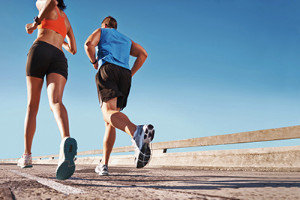 Some of the most common complaints people have with their feet are pain, ingrown toenails, cracked heels, and fungus. When it comes to foot pain, many people are unaware that flat shoes can be just as bad as high heels. Flats do not offer any support for the foot, which can cause those who wear them to experience a lot of pain. Ingrown toenails are often the result of cutting your nails incorrectly; instead of cutting your nails in a rounded shape, you should cut them straight across. If you are trying to cure your cracked heels, you should know that they are caused by a lack of moisture in the feet. A helpful tip is to always moisturize and treat your feet the same way you would want to treat the skin on your face. If you want to get rid of toenail fungus, you should always treat it in its early stages, instead of letting it progress into something much worse. If you have any questions about any of these common foot issues, you should speak to a podiatrist right away.
Some of the most common complaints people have with their feet are pain, ingrown toenails, cracked heels, and fungus. When it comes to foot pain, many people are unaware that flat shoes can be just as bad as high heels. Flats do not offer any support for the foot, which can cause those who wear them to experience a lot of pain. Ingrown toenails are often the result of cutting your nails incorrectly; instead of cutting your nails in a rounded shape, you should cut them straight across. If you are trying to cure your cracked heels, you should know that they are caused by a lack of moisture in the feet. A helpful tip is to always moisturize and treat your feet the same way you would want to treat the skin on your face. If you want to get rid of toenail fungus, you should always treat it in its early stages, instead of letting it progress into something much worse. If you have any questions about any of these common foot issues, you should speak to a podiatrist right away.
Everyday foot care is very important to prevent infection and other foot ailments. If you need your feet checked, contact Dr. Randy Garr from Bigfoot Podiatry. Our doctor can provide the care you need to keep you pain-free and on your feet.
Everyday Foot Care
Often, people take care of their bodies, face and hair more so than they do for their feet. But the feet are a very important aspect of our bodies, and one that we should pay more attention to. Without our feet, we would not be able to perform most daily tasks.
It is best to check your feet regularly to make sure there are no new bruises or cuts that you may not have noticed before. For dry feet, moisturizer can easily be a remedy and can be applied as often as necessary to the affected areas. Wearing shoes that fit well can also help you maintain good foot health, as well as making it easier to walk and do daily activities without the stress or pain of ill-fitting shoes, high heels, or even flip flops. Wearing clean socks with closed shoes is important to ensure that sweat and bacteria do not accumulate within the shoe. Clean socks help to prevent Athlete’s foot, fungi problems, bad odors, and can absorb sweat.
If you have any questions please feel free to contact our office located in Provo, UT . We offer the newest diagnostic and treatment technologies for all your foot and ankle needs.
How to Treat Athlete’s Foot
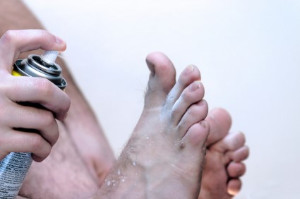 Athlete’s foot is a fungal infection that occurs between the toes. Symptoms of the condition are itchy, dry, red, scaly skin that tends to worsen in the summer when the weather is humid. The infection itself is usually contracted by walking around barefoot in public areas such as locker rooms or gym showers. Treatments for athlete’s foot come in creams, sprays, liquids, and powders, and they will help stop the fungus from growing. If you have athlete’s foot, be sure to wash your feet prior to applying the treatment to the skin and surrounding area. Also, do not apply to open wounds. Contact a podiatrist for tips on how to prevent and treat athlete's foot.
Athlete’s foot is a fungal infection that occurs between the toes. Symptoms of the condition are itchy, dry, red, scaly skin that tends to worsen in the summer when the weather is humid. The infection itself is usually contracted by walking around barefoot in public areas such as locker rooms or gym showers. Treatments for athlete’s foot come in creams, sprays, liquids, and powders, and they will help stop the fungus from growing. If you have athlete’s foot, be sure to wash your feet prior to applying the treatment to the skin and surrounding area. Also, do not apply to open wounds. Contact a podiatrist for tips on how to prevent and treat athlete's foot.
Athlete’s foot is an inconvenient condition that can be easily reduced with the proper treatment. If you have any concerns about your feet and ankles, contact Dr. Randy Garr from Bigfoot Podiatry. Our doctor will treat your foot and ankle needs.
Athlete’s Foot: The Sole Story
Athlete's foot, also known as tinea pedis, can be an extremely contagious foot infection. It is commonly contracted in public changing areas and bathrooms, dormitory style living quarters, around locker rooms and public swimming pools, or anywhere your feet often come into contact with other people.
Solutions to Combat Athlete’s Foot
- Hydrate your feet by using lotion
- Exfoliate
- Buff off nails
- Use of anti-fungal products
- Examine your feet and visit your doctor if any suspicious blisters or cuts develop
Athlete’s foot can cause many irritating symptoms such as dry and flaking skin, itching, and redness. Some more severe symptoms can include bleeding and cracked skin, intense itching and burning, and even pain when walking. In the worst cases, Athlete’s foot can cause blistering as well. Speak to your podiatrist for a better understanding of the different causes of Athlete’s foot, as well as help in determining which treatment options are best for you.
If you have any questions please feel free to contact our office located in Provo, UT . We offer the newest diagnostic and treatment technologies for all your foot and ankle needs.















